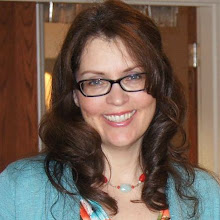So remember in my
last post when I thought I'd figured out most of my Lady Grey fitting issues in my pattern fitting? Me, too. Well, I made a muslin using these pattern adjustments, and that brought me back to reality pretty quickly.
So, here's the front, not looking too bad when you take into consideration the bad right-sided lighting. What would
Cher Horowitz say? Oh, right. Total Monet. Looks fine from a distance, but up close?
See that vertical fold at the shoulder? No supposed to be there. Also, major gaping at the neckline. And then there's the back.
Vertical lines in the center back indicating that the back curve is to much for my very upright back. Easy fix to take this in 1/4 inch. But what I couldn't figure out was what was going on with the shoulders and the armscye. (Aren't you glad that I figured out it wasn't an arm scythe? That would be messy and totally negate the need for sleeves at all.)
So, same vertical creasing as in the front, but I can tell you from having worn this that the armscye was restrictive and while I had good range of motion, I had a difficult time taking the muslin on and off. At first I thought that I needed to decrease the shoulder and tried that adjustment, but given the problems with the tight armscye and putting the muslin on, taking out material didn't seem logical in the end. So I decided to take the drastic step to think about it for a while. And to consult my Fit For Real People (FFRP) book.
The first thing I came up with was to see how the muslin measured up to a ready-to-wear coat that I feel fits me well. This coat is very similar to the Lady Grey in that it is a wrap coat with a large-scale collar and has arm princess seams, so I thought this would be a good comparison. I measured the back of both the coat and the muslin at the bustline and, shocker, the coat was 1 1/2 inches larger than the muslin. So the creasing you see in the picture above isn't because the shoulder is too big. It's actually too small. I had thought of this at first, but FFRP shows broad back lines as horizontal pulling, and that threw me off. Also, I had been treating the edge of the back pattern piece as the center back, but this piece is not sewn on a fold. It has a seam, so my first pattern fitting was off because of this.
So, I made a full back adjustment of 1/2 inch per side. I didn't do the entire 1 1/2 inches that the muslin and the RTW coat were off because my Lady Grey fabric is much thinner than the fabric my RTW coat is made out of. Also, patterns tend to grow once they are put into fabric. I then measured all of the pattern pieces at the bustline to see what the finished garment would add up to and got 43 inches. My full bust is 37 inches, so that gives me 5 inches of ease at the bustline. FFRP says that for a lined or unlined fitted coat, you need 5 1/4 to 6 3/4 inches of ease. So, that's pretty good. I might still add some more width, but I want to make another muslin first.
The shoulders still looked a little wide, but FFRP says that your shoulder seam should be at the tip of your shoulder for a fitted garment. On the muslin, it is for the most part. Front's a little off, but that's not too dire. Also, if you notice, my shoulders, while broad, slope an inch, maybe two. I wasn't originally going to use shoulder pads, but one of the example photos in FFRP showed a jacket fitting in fabric, and the shoulder seams looked almost exactly what I was trying to achieve, and they used shoulder pads. So I caved.
The last adjustment I made was to take a 2 1/4 inch tuck out of the lapel tapering to nothing at the armscye. This has mostly fixed the gaping problem. Here's the front tissue with all of my new changes and with a shoulder pad.
The center front is now at the center front without pulling. However, if I add more width, it might be to the front piece. I'll know after putting the next muslin together.
Here's a close up of the right shoulder. It might still be a little broad, but I think that it's better and hope that this translates to fabric. Shoulder pads. Who knew?
I'm standing a little sideways, but the shoulder looks better, and I can tell you that I don't feel like the pattern is pulling as much.
This is a close-up of the shoulder (I am the queen of stating the obvious). I think that the shoulder pad trues up where the shoulder seam should fall. Keeping my fingers crossed.
I'll be putting together another muslin this afternoon. The only changes that might be needed after that are a little more width through the bustline if needed, a larger tuck to the front lapel and scooping out the bottom of the armscye if it's still a little binding. Hopefully, I'll be ready to start the actual construction on time.





































